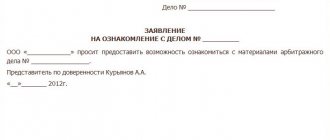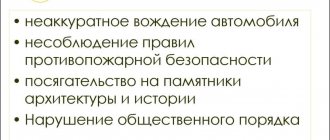- September 22, 2018
- Production
- Vladimir Storozhenko
Product quality control is an important component of any production. Not only its reputation, but also the health and sometimes the life of the end consumer depends on how well the company carries out this procedure. Therefore, increased demands are placed on quality control. Each enterprise organizes this process in accordance with existing norms and rules. Who evaluates product quality and how will be discussed further.
Control Features
The quality of products is assessed by the consumer who purchases this or that item. We turn it over in our hands, examine it or smell it. However, no buyer is able to identify hidden, internal defects in the product. We are not able to determine the chemical composition, the safety of all components of the product for your health, as well as the suitability of the product for its price.
To prevent disappointment, and sometimes quite serious consequences, there are special examinations. They determine quality according to established standards. Moreover, this procedure is carried out long before the final product falls into the hands of the buyer.
Who evaluates product quality? Back in the 17th century, our country had a specialty called “clerk.” This worker monitored the quality of flour and bread baked from it. Of course, in those days the methodology was quite primitive. However, it gradually improved. In the 19th century, technologists and commodity experts appeared. They actively applied the achievements of physics and chemistry in their activities. These employees shared the results of their work with the public. The first bureau of commodity examinations in Russia appeared in 1923.
Why is it so important to monitor the parameters and properties of a particular product? Any product supplied to the end consumer must be safe for human health. At the same time, the properties of a particular product declared by the manufacturer must correspond to reality.
Quality control allows you to determine whether, for example, a shirt woven from 75% cotton and 25% polyester actually contains the stated ratio of materials. Sometimes during inspection it turns out that the material is woven from 25% cotton and 75% polyester. This is unacceptable consumer deception. Products with incorrect labels will be withdrawn from sale.
Not only independent experts, but also the manufacturer himself are interested in conducting quality control. A good reputation takes years to build. This is long, painstaking work. To ensure that these efforts do not go to waste, the company organizes its own quality control. This allows you to quickly respond to any deviation during the process cycle. With this approach, company losses are minimized.
Apple juice portal, May 18, 2015
For many years I worked in the field of human resource management, recruiting and assessing personnel. And more than once I had to answer the questions: “Why am I being assessed?”, “Where will these results go?”, “What will happen to me after the assessment?” The time has come to understand everything thoroughly, to answer everyone at once. To do this, I met with my colleague, Sergei Umnov, a partner in the consulting company.
Sergey is a passionate professional who really cares about the topic. Having two higher educations, a psychiatrist and a psychologist, he became interested in organizational psychology 15 years ago. Worked as a business coach, appraiser. Then he moved to Moscow and came to work at Ecopsi, where in 2010–2014. headed the direction “Human Resources Management”. Medical education and experience working in a hospital have left their mark: for Sergei it is important to see the meaning of his activities, the results of his work, and to be needed. One of its principles is maximum benefit for the client’s business.
We talked with Sergey about why we are being evaluated and who needs it. Should the psychologist evaluating us love people, and should it even be a psychologist? How will the assessment procedure work in the near future, and what is the likelihood that we will be assessed by machines.
Sergey, how can you explain to ordinary people, company employees, why they are evaluated?
To begin with, there are three stakeholders in this process. A customer who wants to evaluate his employees. Performers are independent expert appraisers who carry out the procedure. And actually those people who are being evaluated. Each of the three parties has its own interests, goals and objectives. To answer the question “why”, you need to understand them all.
Let's start with customers. Why should company management evaluate their employees: they don’t trust them, they double-check them?
Indeed, employees often perceive the situation of evaluation as distrust on the part of management, an additional check, which, moreover, in itself is extremely stressful. But the customer is primarily interested in the real capabilities of people. How well does a particular employee meet the requirements imposed by the new challenges facing the business. There are two options here: the customer already has an formed opinion about the professional level of his employees, and he wants, with the help of an independent examination, to confirm or refute it. Or the customer does not have his own opinion, he wants to form one. Assessment helps a manager better understand the people working in a team and their capabilities in order to make smart, informed decisions about training, development and management.
What about expert appraisers, what is their goal?
For them, this is a profession, and they think in different categories. Experts are those people who select the right methodology and tools to assess the qualities of another person.
For example, we use the concept of “competence”. These are integral characteristics of a person, which include the knowledge, skills and abilities necessary to successfully solve problems. This is what distinguishes a super successful specialist from a simply good one. There is an important concept - “potential”. It is potential that determines how effective a person will be in new, complex, non-standard conditions.
Therefore, the customer often poses the question as follows: will a particular employee, who is already successful now, be just as effective when solving other problems? For example, what if I promote him or include him in an important project for the company? When it comes to assessing the potential success or failure of a particular employee, assessment is extremely useful.
In addition to potential, there is also current efficiency. Is she being evaluated too?
Yes, sure. After all, our eyes often become blurry during work; we all tend to put labels on others, behind which we cease to see the essence. An employee's current performance is often emasculated and reduced to simple financial indicators. They matter, but there are also more subtle matters. Therefore, the customer also wants to understand how effective his employees are in solving current problems.
Evaluation is always stressful for any person, regardless of the level of the position held and performance indicators. What to do about it?
Nobody likes to be judged. For many people, this is a vivid and strong fear. But if we are talking about mentally healthy people, then this fear is, as a rule, constructive in nature and mobilizes the person. Assessing abilities is always a challenge. If a person reacts adequately to the situation, then this can become the starting point of transformation for him, the point of the beginning of a new stage in his career. And I often observed such cases in my practice.
It also happens that people do not want to be evaluated and take a defensive position. It is easy to recognize: a person from such a position begins to make excuses, defend himself, tries to devalue the assessment procedure and experts, and makes aggressive attacks towards the management of the organization who ordered the personnel assessment.
But most people still think sensibly. The assessment procedure itself triggers a process of self-reflection in a person. But the second stage is also important - providing feedback on the assessment results. And this is an additional incentive for a person to systematically think about his further development.
Tell us about expert appraisers. Does it have to be a psychologist?
There's good news and bad news here. Good: people who are inclined to do this come to the assessment; interest in another person is in their blood. And these are not always psychologists, contrary to popular belief. The bad news is that interest in another person can be either true or false. People often come into the profession solving their own psychological problems. These are people who are trying to heal themselves through their profession, through other people. And this is definitely a bad option; such a person cannot be as objective and useful to another as possible.
There is a rule in psychotherapy: before you go to a patient, you must undergo a course of psychotherapy yourself, to sort yourself out. Otherwise, you will not be treating the patient, but yourself and your neuroses. Exactly the same thing applies to personnel assessment. If you want to develop in this profession, you need to be a mentally healthy person. Otherwise, there will always be a temptation to take it out on the person being assessed, for example, if the person being assessed turns out to be similar in appearance to the dad who beat you with a belt as a child.
How to recognize such a would-be appraiser?
A professional demonstrates not bias, but maximum objectivity and integrity in all matters of personnel assessment. In a person with false, neurotic motives, all these principles will be violated, this is clearly visible from the outside.
Do you have to like people to become a good appraiser?
To be objective, you don't need to love people. It would be correct to say that you need to feel sincere interest. After all, when we love someone, we always embellish them a little; love is associated with some deification, exaltation of the other, objectivity in this case fades into the background. Every person has both advantages and disadvantages. Therefore, the position of the expert appraiser should not contain either love or hatred, it should be as neutral as possible. High emotional intelligence, a sincere desire to understand another person, the ability to see his motives - this is what is important in the profession.
You said that the assessment procedure can become a point of transformation for a person, the beginning of a new stage in life. But does everyone want to develop?
No matter how loud it may sound, it is a matter of life and death. While a person develops, he lives. As soon as development stops, regression and death begin.
Take money, for example. They love movement. After all, money is not pieces of paper, it is a resource, energy. Once the movement of money stops, it becomes dead. Their value without movement is zero. It’s the same with man: only by constantly developing does he live. His internal energy must be in motion. As long as there is a desire to develop into a person, the energy flow does not stop. Experience shows that people who have achieved a lot in life have a powerful drive for their own development.
How is the idea of development, movement of energy related to assessment procedures?
Our life develops in a spiral. And everyone has their own coil length: some have a year, others 3 or 7. But sooner or later, any person has a crisis moment when he is faced with his failure. Or he comes to a dead end: he sees no point in moving further along the trajectory along which he was moving before, but does not understand what other opportunities there are in life. Or you have exhausted yourself in your profession and need drastic changes.
I sincerely believe that every person should stop from time to time and critically reflect on themselves and their lives. And assessment helps with this, it allows you to look at yourself from the outside. This is a powerful tool for rethinking your plans. It can give an impetus that will allow a person to move on more consciously. After all, in the end, further development options are chosen not by expert appraisers, not by the customer, but by the person himself.
And I just perceive myself as an auxiliary link: I help other people to correctly and competently reassess certain moments of their lives, so that further development is more meaningful, so that a person’s energy flow does not stop.
You work for a company that actually sets trends in personnel assessment. What is happening in this area now? How and by what criteria will we be assessed in the near future?
It is impossible to evaluate a person in isolation from the historical context. Therefore, we proceed from those parameters that become significant in a given period of time. And now I see at least two main trends.
On the one hand, recently we have increasingly begun to talk about so-called soft factors. Subtle matters are becoming more and more in demand: we are talking about values, about the fact that a person wants to be happy while doing this or that job. Before our eyes, business is becoming more humane, flexible, trying not just to come up with another motivation system, but to understand what is inside each individual employee, how he lives.
On the other hand, the world is increasingly immersed in an artificial digital reality. And in the assessment we are no longer talking about ordinary intelligence (IQ), and not even about emotional intelligence (EQ), but about digital intelligence (DQ).
The fact that we live in a digital world, I think, is no longer a surprise to anyone. And the skills that allow us to adapt to this new reality will be increasingly in demand. What are they, how to become successful?
The concept of digital intelligence (DQ) includes three components: digital communication, digital thinking and digital development.
Digital thinking - information has become more accessible, but at the same time it is redundant, even “toxic”. Previously, the key skill was to obtain information, but now it is to understand it, isolate it from the flow and evaluate the adequacy of the source. Determining by the tip whether this is the iceberg that is needed at the moment or not is an important skill that determines digital thinking.
Digital communication is the ability to build networks of social contacts and gain people’s approval through interaction in a new format. We have noticed more than once that people we know personally are completely different in their behavior online from what was natural to expect from them offline: they open up differently, can be more vibrant, charismatic, and make more effective decisions in digital format of the tasks facing them.
Digital development is the ability to constantly learn and nourish yourself in the online environment. Modern self-learning information systems constantly receive feedback from users and from other systems, thereby improving themselves. So is man. Living in this world, he must constantly improve himself in terms of the increasing use of new technologies.
The importance of digital intelligence is growing literally every day, and in the very near future it will become an integral requirement for employees. This is a matter of a couple of years.
Do I understand correctly that digital reality changes the lives of not only those who are being assessed, but also those who are being assessed?
Yes, now there are a lot of opportunities to record objective information about a person without being directly next to him. There are video cameras and Skype. The appraiser does not have to go on an expensive long business trip, and for the customer this reduces the cost of the service. In our company, we are actively developing remote assessment tools - web assessment. And this is just the beginning.
The assessment center method is based on modeling reality; situations are created that recreate the work environment. Let's say, a communication situation between a manager and an employee or a work meeting. Soon technology will allow us to simulate such situations from a distance. Let's say we want to assess how resistant a person is to the pressure of high-status people, and we simulate the situation using a hologram. This could be a conference call with some high-status person, with the president of the company.
In the near future, it will be possible to simulate any reality digitally and set a wide variety of scenarios.
Is there a possibility that a live appraiser may not be needed in the future?
At a minimum, his role will be significantly reduced. Even 10 years ago, in an interview with one magazine, I foamed at the mouth and argued that it is impossible to conduct an assessment remotely, only personal contact between the expert and the person being assessed. But everything is changing too quickly.
Are you saying that in the near future we will be judged by robots, machines?
People's dependence on the virtual world is increasing. We can't deny it. And I see myself in this too. Gadgets and applications make our lives much easier, that's true. They give us directions, help us make purchases, and we consult with them on which hotel to choose. This is convenient, but we lose contact with reality, with living people. So my answer to the question is: yes, the likelihood that we will be evaluated by a machine in the future is high.
Look what's happening, you, as a psychologist, will understand me. According to some theories, our personality consists of subpersonalities, ego, super ego... A person uses social networks. He broadcasts part of himself, his personality, into virtual reality with the help of posts and selfies. He shares his mood and emotions, essentially creating his virtual subpersonality. And he doesn’t even notice how his digital ego is born. And at some point this virtual subpersonality takes over a person and begins to influence his real life. I think that very soon digital therapists who will treat virtual addiction will appear in the atlas of the most in-demand professions.
So, is using Facebook bad?
This is neither bad nor good. Social networks are just a tool, a resource, you need to be able to use it. Those who deny the existence of digital reality or downplay its significance, and do not try to study and understand it, will be less successful in the future. Young people are more flexible, they adapt easily and learn the laws of the new reality. This allows them to consciously change or even create this reality at will.
I don't like Facebook. And I am aware that this “dislike” of mine leads to the fact that I do not use this powerful resource. I find myself consciously refusing social networks, still internally not accepting them, and this is already today, and my children live by it.
Are there already requests for employee digital intelligence assessments?
There have been no such requests explicitly yet. But, as I said, everything is changing very quickly. Therefore, we are working on tools to be ready for such requests. Already, some companies are beginning to build a system for selecting and training people based on the growing importance of digital intelligence.
Read the interview on the “Apple Juice” portal
Control specialist
Who evaluates product quality? It is worth immediately noting that employees whose area of competence includes such procedures may belong to internal or external organizational units. If an employee works at an enterprise that produces a product, he can carry out internal verification of its compliance with established standards. External audits are carried out by independent experts.
Employees of the Quality Control Department (technical control department), who always belong to a specific enterprise, must have an initial level of professional education. Internal employees also include product quality engineers at factories and commodity experts in trade.
At the same time, an independent expert on product quality is an employee of the Bureau of Commodity Expertise. It is subject to the orders issued by the Chamber of Commerce and Industry. The work of this organization is aimed at protecting consumer rights. Independent experts can also work in standardization, certification and metrology centers.
The salary of employees involved in quality control (internal and external) ranges from 20 to 80 thousand rubles. in Russia and from 30 to 200 thousand rubles. in Moscow. Such employees must have certain knowledge and professional skills.
Depending on the type of product, product quality is assessed by an international system of standards or domestic regulations. The expert must know thoroughly all the provisions of the approved documents. At the same time, he must know the testing technology in which he currently specializes. He must also have certain knowledge in the field of chemistry, physics, materials science, etc. The list of skills depends on the employee’s specialization. He must be able to handle the appropriate equipment, know the regulations and standards.
How is property assessed during bankruptcy?
Everything related to the assessment of the debtor’s property, including real estate and collateral, is regulated by Federal Law No. 127 “On Insolvency (Bankruptcy).” Let's figure out what stages the assessment of the debtor's property consists of and how long it takes.
Preliminary stage: inventory of property
The first thing that needs to be done before the assessment is to determine what property of the debtor is included in the bankruptcy estate and will be sold. For this purpose, an inventory is drawn up, including a complete listing of all movable and immovable property owned by an individual at the time of bankruptcy.
- If the bankruptcy initiator was a creditor,
then the property is described by the financial manager appointed by the arbitration court when considering the case. At the same time, he identifies hidden property, looks for signs of deliberate or fictitious bankruptcy, looks for bank accounts, etc.
- If the initiator of bankruptcy was the debtor himself,
then he independently conducts an inventory of property and indicates in it everything that he owns (vehicles, residential and non-residential premises, etc.), and then transfers it to the financial manager, who conducts an additional check and makes an inventory. It will not be possible to hide or accidentally “forget” to include property in the inventory, since the manager carefully checks everything.
Lawyer's comment:
“As a result, a full-fledged document is drawn up, containing not only the names of what belongs to the debtor, but also a complete technical description of each item. For example, if we are talking about a house, garage or other real estate, then the document indicates: cadastral number, location, grounds for the emergence of ownership rights and other important information. Our company’s lawyers always double-check the inventory in order to exclude from it some of the property that is not subject to sale, and, if necessary, make other corrections.”
Efremov Alexander Igorevich
Arbitration manager
What property is not subject to seizure and assessment
Art. 446 of the Code of Civil Procedure of the Russian Federation defines property that cannot be included in the bankruptcy estate and sold:
- the only housing, with the exception of collateral (for example, an encumbered apartment with a mortgage),
- the plot of land on which it is located
- personal items
- essential household appliances
- Food
- livestock not used for business activities
- items used for professional activities, if they cost no more than 10,000 rubles
- state awards, etc.
This property is not included in the inventory and is not subject to valuation.
Quality control
To determine whether a certain product meets the declared properties and consumer requirements, a product quality assessment is used. It is associated with such concepts as “quality control” and “quality level assessment”. It is worth clarifying the difference between these concepts.
The quality of products and services is a test that can reveal the compliance of the properties of the final product with the requirements of standards, technical specifications, and requirements specified in the supply contract. The purpose of such a check is to study a limited number of indicators on the basis of which the grade of a product is established.
Product quality assessment has a broader definition. During its implementation, a larger number of indicators are taken into account.
Assessing the quality level is a set of actions that include selecting a range of indicators of product properties, determining their values and comparing the obtained values with the base level.
The quality level is also applied during the assessment. This is a relative indicator, which is expressed as a percentage or as a coefficient. The resulting value is compared with the baseline level. This is how the relative indicator is determined. This work is carried out even before the start of mass production of the product. This technique allows you to select the best product to manufacture. Using the quality level, the indicator is monitored over time, as well as the planning procedure.
Purpose of the study
The quality of products is assessed by the relevant service. However, before this you need to choose the direction of such work. When conducting research, it is important to correctly set the purpose of its conduct. This allows for targeted research. After this, you can designate a range of indicators that the product must meet. During the organization of the quality control process, product requirements are identified. Next, the actual properties of the product are compared with its required levels.
Enterprise control
Improving product quality is impossible without determining the current state of goods and services. Therefore, every enterprise that wants to maintain a competitive position in the market evaluates the properties of its products in accordance with established methods. This procedure is carried out in 3 stages:
- Incoming control. Involves tracking the properties of input raw materials that will be sent to production. It is impossible to produce a high-quality product from materials that do not meet the requirements of the technological cycle.
- Interoperational control. It is carried out directly during the technological cycle. This allows you to monitor the correct execution of each operation, identify and eliminate defects in a timely manner.
- Output control. This is a type of assessment of product properties, which is carried out after the completion of the production cycle. The procedure is carried out to determine the basic properties of finished products. They are correlated with established standards, technical specifications, norms and hygienic requirements. Each product has its own list of regulatory documents that make it possible to determine the product’s compliance with accepted indicators.
If the product is supplied to other countries, the company evaluates the quality of the product according to an international system of standards. Also, if the finished product is created for foreign equipment, it is required to use similar documentation during the assessment. For domestic market products, GOSTs, OSTs, SanPiN, SNiP, etc. apply. Each product has a specific standard or requirement.
The quality control department evaluates not only the quality of the product itself, but also the compliance of packaging, labeling and other parameters with established requirements.
Main stage: assessment
The assessment is carried out only after an inventory of the property. On average, the inventory takes 1-2 days, not counting situations where the bankrupt’s property is calculated in very large amounts/sizes. In this case, the deadlines increase.
- Financial Manager
He carries out the assessment himself in 80% of cases, because it is faster, easier and more profitable for everyone involved in the case. When assessing property, he necessarily focuses on the market value of the items and the degree of their wear and tear.
Fact!
If a manager needs to estimate the cost of a car, he analyzes similar market offers, then checks the current condition of the car (interior, body, engine, whether they have been repaired) and forms the final cost of the vehicle taking into account its technical condition.
- Professional appraiser
He is involved in the assessment by the financial manager himself or other participants in the process (for example, creditors) if they doubt that the value of the property is determined correctly.
Important!
The expert’s services are paid for by the party that invited him to conduct an independent assessment of the property.
An expert always works only for a fee. Usually he is involved when an appraisal of expensive property is required:
- precious stones
- antiques
- paintings
- jewelry and other things
Methods used for property valuation
To evaluate property in the event of bankruptcy of an individual, the financial manager takes into account the payment documents submitted by the debtor (for example, a purchase and sale agreement, receipts, etc.), and also uses different approaches:
- Comparative . The cost of items is formed taking into account market prices established for similar objects. Managers often use independent platforms for valuation (Avito, Yula and others), find things with similar characteristics and track the average market value. This method is relevant for technology and equipment.
- Expensive . The financial manager or professional appraiser takes into account the debtor's expenses for purchasing the property and additional improvements. This method is often used when determining the cost of an apartment or house: since one purchase is not enough, additional costs are added to it (for example, for repairs and decoration).
- Profitable . The potential income that could be derived from owning the debtor’s property (for example, from renting out a house or cultivating a plot of land) is taken into account. Current valuation method for inclusion of commercial real estate in the bankruptcy estate.
Evaluation results
All participants in the process, including the debtor and creditors, have the right to familiarize themselves with the results of the property assessment. After all items are described and assessed, the manager submits the position to the court. He has exactly 1 month to do this from the date of completion of the property assessment.
The regulation specifies information about the procedure, conditions and features of the sale of property. The starting price at which items will be sold must be indicated. The provision is considered accepted after it is approved by the arbitration court.
Assessment Methods
Product quality is assessed by a system of standards adopted in accordance with the purpose of the study. The company uses a specific methodology to carry out this work. Evaluation of the parameters of the finished product can be continuous, selective or statistical. The choice of technique depends on the specifics of the product.
Sampling control involves selecting several pieces of products from a batch of goods. The results obtained during the inspection are applied to the entire lot. A complete assessment is carried out for each unit of production. This technique is quite expensive. Therefore, it is used only in undeveloped technological cycles. Over time, the enterprise switches to a different assessment system.
Statistical quality control of product production is also called preventive. It is carried out throughout the entire technological cycle. It is needed to prevent defects from occurring and similar products going on sale.
A conditional measure of product quality is grade. This is a quality gradation that can take into account one or more product parameters. The standards are established in the relevant documentation. In some cases, the variety is not determined. Products are simply classified as passable or unfit. At the same time, a number of defects are assessed, which may or may not be acceptable. In the second case, the product is rejected and does not go on sale. Marriage can be:
- by origin - a defect in raw materials, technological or arising during storage or transportation;
- in size - small, large;
- by location – local, widespread;
- if possible, definition - visible or hidden;
- by degree of significance – critical, significant, insignificant;
- if possible, correctable, incorrigible.
Depending on the type of defect, a decision is made on the possibility or impermissibility of the product being put on sale. The relevant standards describe all acceptable defects.
Apartment valuation
We hereby inform you that in accordance with Art. 6 of the Federal Law of July 27, 2006 No. 152-FZ “On Personal Data” The non-profit partnership for innovative activities in the social sphere “MosGor”, for the purpose of concluding and subsequent execution of civil law contracts for the provision of services by the Partnership, in accordance with the requirements of the law, processes the data of personal data subjects — Customers (Recipients) of services indicated by Customers in this service order form, both with the help of their software and hardware, and without their use, during the period from the moment the service order is formed and until the deadlines established by regulatory documents, during which the Partnership is obliged store information about the subject of personal data - the Customer of services and the Services provided.
The processing of personal data refers to actions (operations) with personal data, including collection, systematization, accumulation, storage, clarification (updating, changing), use, distribution (including transfer), depersonalization, blocking and destruction of personal data.
The partnership ensures the confidentiality and security of the personal data received. The subject of personal data agrees that the personal data of the subject of personal data may be transferred to third parties engaged by the Partnership on the basis of relevant agreements to fulfill obligations under contracts with Customers. An essential condition of contracts concluded by the Partnership with third parties is the obligation for third parties to ensure the confidentiality of personal data and the security of their processing.
The subject of personal data has the right to withdraw his consent to the processing of personal data. Consent to the processing of personal data terminates from the moment the legal relations of the parties under the contract are terminated, except in cases established by the current legislation of the Russian Federation.
By sending this service order form to NP MosGorUsluga, you, in accordance with Federal Law No. 152-FZ dated July 27, 2006 “On Personal Data,” give your consent to NP MosGorUsluga to process all personal data specified in this form , the following actions: collection, recording, systematization, accumulation, storage, clarification (updating, changing), extraction, use, transfer (distribution, provision, access), depersonalization, blocking, deletion, destruction, both using software and hardware, and and without their use, for the purpose of concluding and subsequent execution of a civil contract for the provision of services.
Methods for comparing indicators
Product quality indicators are assessed using different methods. They differ depending on the source of information and methods of comparison. This allows for a comprehensive study. According to the methods of comparing indicators, differential, complex and mixed methods are distinguished.
The first of these approaches involves comparing individual indicators with the corresponding basic values for a given type of product. This is convenient to do if you need to evaluate the quality coefficients of goods. If they are greater than 1, the production will correspond to the base value of the sample. If the indicator chosen for the study is less than 1, this indicates that the product does not correspond to the control sample.
How to evaluate the quality of a product or service? You can also use a complex technique. It is based on the use of one basic indicator. This is a generalized value that combines several indicators. Each of them is represented as a dimensionless unit. Only the degree of their significance is determined. This is the weight of the indicator for the overall assessment. Next, the arithmetic mean is calculated. This allows you to evaluate the significance of each component, while obtaining a final grade.
Another option is to use a mixed methodology. It is based on the simultaneous use of single and complex values. This method is used when the total number of quality indicators for a product is large. In this case, it is not enough to use one complex coefficient. It is not able to fully reflect the real picture.
Self-esteem. Can people adequately evaluate themselves, and how to learn this?
Realizing your true value is the key to success. Judge for yourself! If a girl on a date constantly repeats that she is ridiculous, strange, awkward, then at some point her boyfriend will begin to believe it - and hello to the relationship. If an employee does not value himself and accepts a low salary, he is unlikely to be paid more. Of their own free will, few business owners promote a specialist to a career pedestal. You need to really distinguish yourself and prove your value and importance to the enterprise. And in order to prove something, you need to at least assume this “something”.
As a writer and popularizer of psychology, readers who devalue themselves, or at least underestimate themselves, often turn to me for recommendations and help. And if they don’t value themselves, then those around them do the same. A person of no value is not valued; he is easily replaced by someone else. He's not valuable! An unvalued woman or an unvalued man in a personal relationship can easily be replaced by another woman or another man. I’m generally silent about the employees! Ruthlessly fire or demote an unvalued specialist - how to get rid of ballast! He doesn’t demonstrate self-respect and awareness of his worth! And he is unlikely to defend himself.
But criticizing people for low self-esteem and saying “value yourself more” is pointless. After all, devaluing oneself is not a whim or a whim, but the result of something that happened a long time ago, at an unconscious age. I suggest you talk about why many people are faced with the problem of self-esteem; they cannot evaluate themselves adequately, and therefore do not achieve success either in their personal lives or in their careers.
How self-esteem is formed
Self-esteem is a set of knowledge about yourself. The larger a person’s collection of more or less objective information about his own personality, the more accurate his self-esteem. But where does this knowledge come from?
A person is born with a consciousness as pure as a white sheet of paper. But from the first minute of life, this sheet begins to be filled with entries. These records are information that a small child picks up from the surrounding space. The very first information is the mother’s reaction at the moment of the first meeting with the newborn baby. If mom smiles, it means she is happy. And if she’s happy, it means the child brought her joy. And if he can bring joy, then he is good. I hope the chain of perception is clear, and there is no need to build similar chains in case of other mother’s reactions.
This is the first brick in the foundation of self-esteem as knowledge about oneself. And then the foundation begins to grow and strengthen. Everything that parents tell a child about himself becomes basic information for self-esteem.
“You're a slob! You're a bad student! You're not trying! You are lazy!" — brick by brick, self-esteem is built into a solid foundation of personality. If a child is not praised, he will never be able to have adequate self-esteem. How does he know that he is not only lazy, but, for example, talented or handsome? How can a little person know what is considered beauty and talent? How can he know whether he has these qualities? Only from mom and dad! It is dad and mom who form self-esteem. And as an adult, a person lives with this inheritance. He looks at himself in the mirror, but he sees not what exists objectively, but what was put into his consciousness by his father and mother. That is, he sees himself through the filter of parental imposed beliefs. And getting rid of this filter is very difficult.
Is it possible to convince a person that he is more valuable than he thinks?
It would seem that if someone has put one piece of information into a person’s consciousness, it means that another can be put there as well. For example, mom and dad constantly devalued the child, but friends will appreciate him. And then, for example, a child will grow up, meet love, and a loved one will tell him so many wonderful things about himself that his self-esteem will change. Yes, it would be nice if it worked like that. But it was not there! If the foundation contains the parent bricks of depreciation, nothing else can be built on them. Parental messages are the most powerful and strongest.
If a person suddenly realizes that mom and dad misjudged him, he may want to reset his consciousness and update information about himself. But in this case, the conscious part of the personality and the subconscious will inevitably collide. Consciousness may want to increase the value, but the unconscious part may urge: “Where are you going with a pig’s snout in a Kalash row! Take off your crown, don’t disgrace yourself!” Although, of course, long-term work with oneself can give results and correct the set of knowledge about oneself, but it will no longer be possible to remove the bricks of mom and dad from the foundation on their own. You can simply learn to live with this. The good news is that you can adapt to this quite successfully!
What if a person values himself too highly?
The other extreme of awareness of value is inflating the significance, inflating the real “price”. You might think that such people were told too many good things by their parents about their personalities. But in fact, everything is exactly the opposite. People with high self-esteem are usually formed in families where devaluation was especially severe, and emotional rejection was added to it.
If the child was not pitied, not caressed, did not share his childhood sorrows, did not give him support, did not try to understand him, did not protect him from his childhood enemies, did not show him love, did not tell him how valuable he was to his parents, the child grows up with feelings huge emptiness inside. And he needs to fill this emptiness with something. And if there was no initial data about one’s value received from parents, the void begins to be filled with fantasies.
Usually there are two types of such fantasies: “I am insignificant” and “I am perfect.” It seems to such people that they are worthless and untalented, and this inferiority needs to be hidden under beautiful tinsel. They begin to attribute to themselves qualities that they actually do not have. After all, you need to have at least something in the foundation of knowledge about yourself! And then fabulous golden bricks are laid into the foundation! But this does not help to be truly loved and successful. After all, these people have no real knowledge about themselves, which means they become like mirage personalities. It seems that there is a picture, but there is no real confirmation. Fake personalities are very uncomfortable in communication. It's difficult to get close to them because it's unclear who you're really getting close to.
How to determine your true value?
“I am value” is when I am honest with myself. When I know the real me, without embellishment, but with merits. To form adequate self-esteem, you need to know yourself or yourself. And this happens in contact with other people. And if adequate self-esteem is not formed by parents, the help of a specialist, psychologist or psychotherapist is important. It is necessary to correct what happened at an unconscious age in the child-parent relationship.
There are different qualities in the foundation of self-esteem of an emotionally healthy person, but they are not divided into good and bad. They can be divided into qualities that help to realize oneself in society and receive maximum satisfaction, and qualities that hinder development at the moment. And at another moment these same qualities can become valuable and useful.
Take, for example, spiritual generosity. If I'm generous, I attract people, they feel comfortable around me, I have a lot of friends, men like me. But if my generosity has no limits and is not supported by self-esteem, I can give without receiving anything in return. And then they will use me as a useful thing, and then throw me in the trash. Therefore, I know that I can not only be generous, but also very greedy. It all depends on the feedback, on my understanding of why I am generous, and what goals my generosity allows me to get closer to.
I am often called aggressive. This perception arises when readers, instead of discussing the topic of publication, move on to discussing my personal qualities and attach value judgments to my work. Because I have healthy self-esteem, which my therapist helped me build, I do not allow myself to be insulted and defend my beliefs. Opponents, apparently, are not accustomed to the fact that their victim guards his personal psychological boundaries, so they confuse self-respect and aggression. But even in the very concept of aggression there is nothing negative for me. Aggression is the will to live, an active life position, the ability to conquer the heights of success, the desire for various achievements. And if I have adequate information about my personality, I will not allow things to be labeled on me that are not my real qualities. I am not inclined to idealize myself, but I will not allow myself to be devalued either. This is healthy self-esteem based on psychological maturity and self-esteem.
If the topic aroused your thoughts and emotions, I would be glad to see your response here:
Baseline
Product quality control cannot be carried out without determining the basic indicator. It is an ideal or threshold that the finished product must meet. In some cases, the product must not only be equal to, but also exceed the established value in its characteristics.
To understand what features a product should have, special standards, norms and other similar documents are drawn up. They detail the qualities of the underlying indicator. Only by knowing it can one carry out research and evaluate the compliance of a real product with the established characteristics.
Product quality is assessed by a system of standards. They can be local, national or global. The basic indicator is described in detail in norms, requirements, standards, and technical specifications. It is extremely important to understand what qualities a product or service must have in order for it to be considered competitive. Therefore, a comparison is made between the base and actual indicators.
This is an extremely important process for production. The choice of a basic indicator should not just combine a number of characteristics. Its value must be realistically achievable. In addition, during the production planning process, a level of the basic indicator is selected that will be optimal for the product at the moment. Therefore, special institutions develop basic indicators that correlate all the nuances, production features and consumer requirements. Based on these data, the optimal characteristics for modern conditions for each type of product are calculated.
Controls
Regardless of who evaluates product quality, different means may be used to obtain the necessary information. Both external and internal controllers can use one or several methods at once. The main such means are:
- Measurement. Using special equipment, the chemical composition and main operational characteristics of the product are determined. After this, the obtained exact values are compared with the established baseline indicators. For example, this could be measuring weight. It is determined using equipment with a given level of accuracy. Then the obtained value is compared with the information specified in the relevant documentation.
- Registration. It involves recording certain characteristics of the product.
- Application of the sample. Comparison of finished product indicators with the base sample.
- Visual. The inspector evaluates the appearance of the product. He carefully examines the actual sample for relevant defects.
- Organoleptic. It is a set of methods that involve the use of human senses in the process of determining the qualities of a product.
Each of the presented methods may include several different ways to obtain the necessary information. The choice of one method or another must correspond to the characteristics of the object under study.
Laboratory work in production
To be able to manage product quality, enterprises operate laboratories. They solve a number of problems that ultimately make it possible to significantly influence the final result of the technological cycle. The laboratory's remit may include a whole range of tasks. It may differ for each type of production. However, the main functions of the laboratory are:
- Monitoring recipes, following established technological instructions and sanitary requirements during the production process. Work is carried out at all stages of the production cycle.
- When a defect occurs, laboratory representatives establish the reasons for this phenomenon. They participate in the development of methods to eliminate such phenomena. This allows you to improve the quality of finished products and reduce the cost of defects.
- Monitoring compliance with established requirements of raw materials, materials, and packaging.
- Monitoring compliance with norms and rules for the storage of finished products, semi-finished products and blanks in workshops and warehouses.
- Microbiological control (if necessary) at all stages of production. The cleanliness of air, equipment, water and consumables is also assessed.
- Assessment of the sanitary condition of production, as well as compliance with personal hygiene rules by enterprise employees. This prevents foreign materials from getting into the finished products.
- Determining the consumption of raw materials sent to production, preventing its losses. Laboratory employees participate in the development of measures to reduce losses and production waste.
- Organization of the required verification using a suitable control method (organoleptic, measuring, etc.).
By considering who evaluates product quality and how this work is carried out, you can understand the features of this process in production. This is an extremely important process that allows you to give the product the required qualities, eliminate the appearance of defects and its delivery to the end consumer.
How to evaluate product quality
Hello Habr!
Recently I came across an article about Service Now. It described how good their product was. They even showed a middle manager with a microphone, who said something without numbers (from the article - “the time of administrative work was reduced, and doctors were able to focus on their main purpose”).
However, a quick reading of the article left me with a slight aftertaste, at least due to the fact that I worked from this system (as a user). And I had an absolutely negative opinion about the software of this company in general (and about the product in particular).
After the article, I tried to understand - how can one evaluate from such advertising presentations whether the product was actually used by users, or whether it only helped middle managers get another bonus?
My personal, not entirely cultural and, at the same time, emotional opinion about Service Now products.
If you describe this solution in one word, then “bottom” is ideal. To describe it in two words, it’s “full bottom.”
In theory, this product should help administer the work of a large enterprise (where a manager from India can see that an order has opened for the supply of cargo in Nigeria), but I absolutely do not understand how this is possible if:
- Technically, the product is wretched: It does not support working from different tabs (let me remind you - it’s 2021). You cannot edit a ticket in two different browser tabs at the same time
- It does not support subscription to certain tickets/tasks (or in other words, entities). That is, if you created an application, then check the status every hour. Let me remind you once again that marketing brochures talk about enterprise optimization.
- The site works so slowly that there is a special widget in the corner of the screen that shows how long the response of the server and client (i.e. browser) was. Why does the user need this? Once again, make sure that the IT department consists of weak developers?
- The user does not have the ability to customize and optimize for himself. Apparently, the merchants from Service Now believe that they can make a dynamic form convenient for everyone at once. They are wrong.
The only thing I admire is the Service Now sellers. If I had these guys on my team, I would not hesitate to open a company in any sector of the economy. Since they sold Service Now, they are able to not only sell snow in winter, but also sell multi-year subscriptions to snow for Arctic expeditions.
However, these are all emotions, then only constructive.
In order to define the terms of the article in advance, and at the same time narrow the subject area, it is better to define the terms as follows:
- Product - a program/service, etc., that helps specialists in their work (in theory or in practice). The article does not discuss services that are imposed by the state. Also, the article does not discuss programs that allow you to get rid of workers (such as replacing bank tellers with ATMs), since in this case the most objective factor will be economic indicators. Also, the article does not discuss things that help not specialists at work, but, for example, a person at home/outside of work.
- A good product is a product that allows a specialist to save time on routine tasks (for example, a doctor will be able to do less routine writing and spend more time on the patient)
- A bad product is the antonym of a good product, that is, a solution on which a specialist spends more time working than he spent before, provided that the workload on other company workers has not decreased either (after the product has been put into operation)
- Product A is better than Product B - Product A saves more time on routine tasks for specialists than Product B.
From the terms above we get a corollary: if a product saves a specialist’s time, then the latter will be able to produce more goods/services, which will lead to higher income (unfortunately, it is not a fact that it will lead to higher profits).
Immediately the thesis: a good product is praised by the specialists who work with it; a bad product will be praised by people who have never even touched it . Or in other words, if there is no reason to consider the product good, then the recommendations will come from people who have not worked with the product at all. Often these are the same people who received a bonus for successfully implementing the service.
If you return to the article about the excellent Service Now, you can see that the laudatory odes come from “a representative of the medical company Magellan Health” (to quote verbatim). And continuing the retelling: “the time of administrative work was reduced, and doctors were able to focus on their main purpose.” That is, instead of the doctors, a conditional “representative” came, who told the doctors how well they felt.
A story from life: one of the old insurance companies in the Russian Federation (unfortunately, I cannot name the name, since NDA, etc.) uses a self-written system for accounting policies (plus for automating business processes). In most cases, insurance agents work with this system (in fact, it was developed for them), but there are a number of nuances:
- Insurance agents absolutely hate this system. Not only does the product work only on Windows, but also during peak hours it likes to throw errors like “no free licenses”, “Error ORA-12345”, etc.
- The technological state of the system is so high that: To configure it, you need to register several certificates as trusted ones on your OS
- Due to the fact that a number of operations take place on the terminal server, the system by default does not see the connected printer (really, why would an insurance agent print something?)
- The system does not know how to do standard routine things, such as scaling photos, etc. An insurance agent must be able to independently compress a photo to N Kb
Brief idea: if there are no positive reviews from users for a product, then the program is teeming with shortcomings that are skillfully covered up. Or in other words: if users do not praise the product, then this is a sure sign that the product lacks feedback. But it is often not there where users will only respond angrily in the style of “what kind of misery have you done,” etc. Hence we get: in order to limit the number of negative things, we also cut off all the positive things.
The phrase “no complaints” usually angers me. After all, you can find complaints about almost any service, product, service if you ask the users carefully. However, the idea of “no complaints” is often applied in the context that “there are no complaints registered”, then there is simply no way for the user to “submit complaints”. Will developers of good products make it difficult for themselves to provide feedback? No, of course, it is not profitable for them. Unlike the developers of problematic systems.
Continuing with the insurance company example, a great system that allows agents to spend less time working with clients and more time sitting at the computer provides several ways to provide feedback. And they are made just perfectly (in my opinion):
- In the system itself, you can “write a message to the developers,” in which, in theory, you can write down all the details. But here’s the problem: you can’t monitor the status of the message in any way, because it’s sent as if into a black hole. By the way, there are officially no complaints about the system.
- You can write a letter to the developers that ends in nothing (even if you read it).
- And of course there is no official bug tracker, no one publishes information about releases or new features.
As you can see from the example above, reaching developers is incredibly difficult. As a result, on the one hand, feedback is lost, on the other hand, a middle manager can happily report: “there are no complaints, we are not making mistakes.” For comparison, you can easily complain about these products: IntelliJ Idea, Artifactory.
Teams with poor quality products often intentionally make it difficult to provide feedback to users. At a minimum, this allows the development team to do what the development team wants instead of helping the user/business. At the same time, if someone who does not work with the “product” is responsible for salaries and promotions, reviews from users can almost always be manipulated.
Despite the clickbait title, I will describe only a couple of techniques that will help in selling a bad product. That is, one that, in principle, users do not like (it harms them and forces them to spend more time on routine, moreover, it does not help in any way to optimize and structure their work).
- The very first thing is no contact with users. They should not be present either at presentations or during the introduction of the product (at all stages: purchase, etc.).
- Second, you must show that many reputable people from other companies use the product. The main thing is the person, not profit. If you're talking about Apple, show a photo of Steve Jobs with an apple in the background.
- And lastly, you are selling the product to managers, not specialists. You should not help “ordinary workers”. Focus on “systematization” (not many directors know what distant subordinates are doing there, but with your system everything will be under control), “automation” (after all, in the future it will be possible to reduce staff). And don’t forget about trends: instead of the phrase linear regression, you can use Artificial Intelligence or ML.
How to implement:
- Selling: The first thing you need to do is show that the product is used by many people . Any manager should have an ironclad excuse that everything is working for everyone (i.e. when the manager shows the report to the boss, the document should clearly demonstrate that “half of the TOP-500 companies have successfully implemented the product”, or “ 30% of fast-growing startups have implemented a product”, etc.). This is the most important selling point (besides the obvious ones). You must remove information from efficiency figures (if we are talking about automation, then in principle there should be no calculations of what working time is currently spent on, what prevents you from working faster/better, etc.). No individuality, no close analysis.
- At the beginning of implementation, you need to find a department that will be the first to switch to your system. Ideally, if he is not very loaded (they don’t just give him tasks, right?) and with people who are motivated to implement new things (they need to repeat more often that they are innovators, etc.). Ideally, promise them a bonus for their assistance (which obviously doesn’t always work). Important: the department that will be the first to use the system should not be in any way interested in criticizing the system. That is, the motivator should be the implementation of the system, and not the quality of work or the efficiency of the department.
- After implementation: all communication with developers should be strictly through your channels (naturally, they should not be the most convenient, with a long and slow support service that advises you to first reinstall the system before starting to study the issue).
I hope this article will help good products get promoted in the market. I really hope that if you are involved in product development, after reading this article you will be closer to the users (not the managers). Ideally, if you make a questionnaire for users (or better yet, a periodic one), where all the fields will be optional, and at least half will be in the style of “if you want to add anything else on the point above, write in this text field.”










